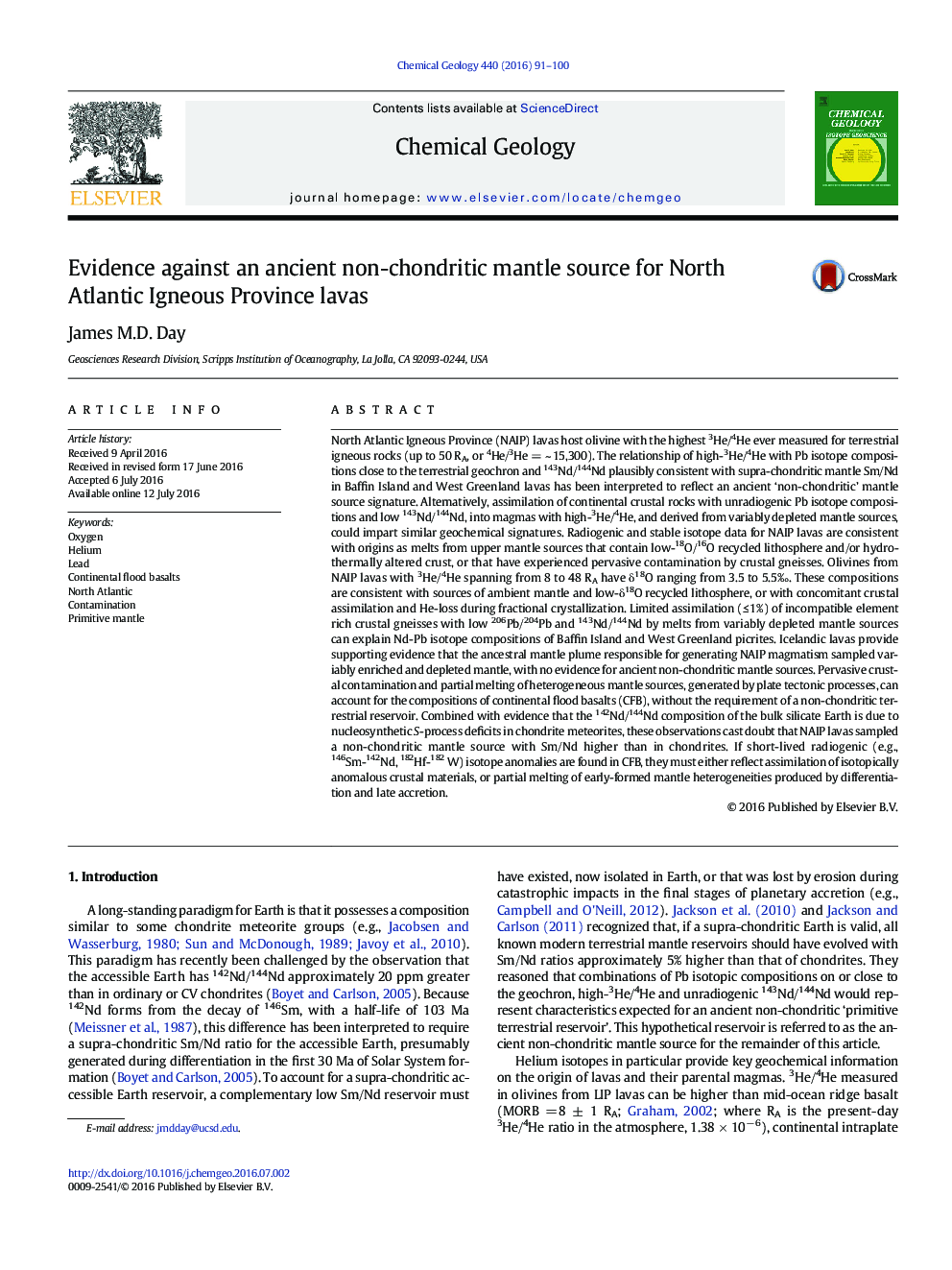| Article ID | Journal | Published Year | Pages | File Type |
|---|---|---|---|---|
| 6436021 | Chemical Geology | 2016 | 10 Pages |
â¢Pervasive crustal contamination of North Atlantic Igneous Province meltsâ¢Tracking of primitive sources complicated by He isotope decoupling from lithophile isotopesâ¢Crustal assimilation yields trends similar to those expected for an ancient non-chondritic sourceâ¢Isotopic variability reflects recycled mantle heterogeneities and crustal contamination
North Atlantic Igneous Province (NAIP) lavas host olivine with the highest 3He/4He ever measured for terrestrial igneous rocks (up to 50 RA, or 4He/3He = ~ 15,300). The relationship of high-3He/4He with Pb isotope compositions close to the terrestrial geochron and 143Nd/144Nd plausibly consistent with supra-chondritic mantle Sm/Nd in Baffin Island and West Greenland lavas has been interpreted to reflect an ancient 'non-chondritic' mantle source signature. Alternatively, assimilation of continental crustal rocks with unradiogenic Pb isotope compositions and low 143Nd/144Nd, into magmas with high-3He/4He, and derived from variably depleted mantle sources, could impart similar geochemical signatures. Radiogenic and stable isotope data for NAIP lavas are consistent with origins as melts from upper mantle sources that contain low-18O/16O recycled lithosphere and/or hydrothermally altered crust, or that have experienced pervasive contamination by crustal gneisses. Olivines from NAIP lavas with 3He/4He spanning from 8 to 48 RA have δ18O ranging from 3.5 to 5.5â°. These compositions are consistent with sources of ambient mantle and low-δ18O recycled lithosphere, or with concomitant crustal assimilation and He-loss during fractional crystallization. Limited assimilation (â¤Â 1%) of incompatible element rich crustal gneisses with low 206Pb/204Pb and 143Nd/144Nd by melts from variably depleted mantle sources can explain Nd-Pb isotope compositions of Baffin Island and West Greenland picrites. Icelandic lavas provide supporting evidence that the ancestral mantle plume responsible for generating NAIP magmatism sampled variably enriched and depleted mantle, with no evidence for ancient non-chondritic mantle sources. Pervasive crustal contamination and partial melting of heterogeneous mantle sources, generated by plate tectonic processes, can account for the compositions of continental flood basalts (CFB), without the requirement of a non-chondritic terrestrial reservoir. Combined with evidence that the 142Nd/144Nd composition of the bulk silicate Earth is due to nucleosynthetic S-process deficits in chondrite meteorites, these observations cast doubt that NAIP lavas sampled a non-chondritic mantle source with Sm/Nd higher than in chondrites. If short-lived radiogenic (e.g., 146Sm-142Nd, 182Hf-182 W) isotope anomalies are found in CFB, they must either reflect assimilation of isotopically anomalous crustal materials, or partial melting of early-formed mantle heterogeneities produced by differentiation and late accretion.
